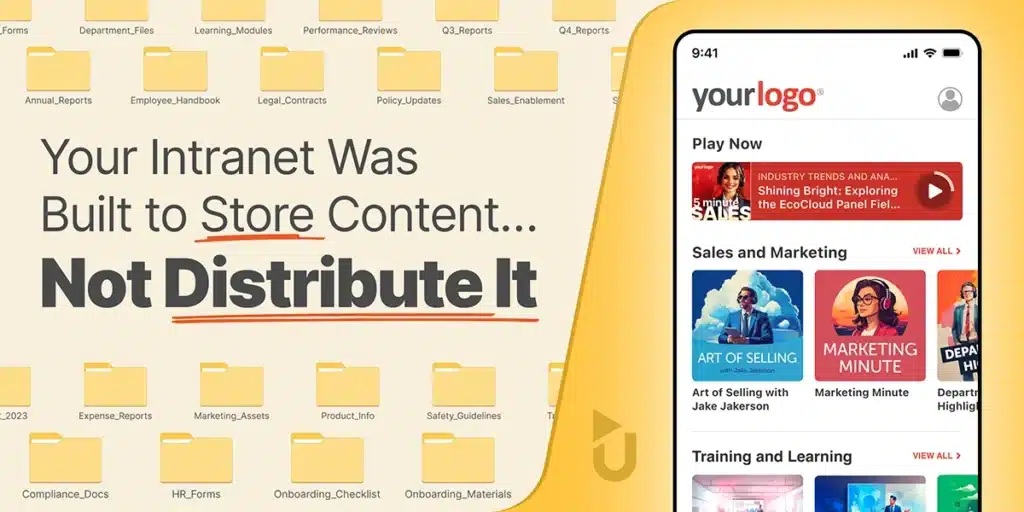Beyond The Basics: Video Analytics That Tie Views To Buys
uStudio Staff | Data & Analytics, Industry Trends, Marketing, Video Leaders, Video Platform


This post originally appeared on CMO.com as a CMO Exclusive.
Video is becoming pervasive in today’s modern marketing organization. We use it to market and sell our products, build communities on social media, train our employees, and message across our geographically dispersed organizations.
No matter how your company currently uses video, it probably measures video performance across three industry-standard metrics: impressions, views, and engagement. These measurements, alone, can be helpful in determining general audience tastes and preferences and for measuring soft targets, such as affinity.
However, where these metrics prove insufficient are in providing the evidence a marketer needs to measure hard targets, such as sales or loyalty. To date, the link between videos watched and products sold has been hazy, at best. Perhaps the viewer shared a video link or tweeted his enthusiasm for what he watched, but did he eventually purchase a product or service, and what role did the video play in accelerating that purchase? This data is harder to tease out.
As marketers, we regularly piece together 360-degree portraits of our customers. However, we are less accustomed to putting together full views of our videos. Transformations in the technical landscape are now changing that. Video management tools are rapidly evolving, and, as a result, video analytics are becoming more sophisticated. With the advent of enterprise video platforms (EVPs), a content owner’s ability to stay tethered to each and every video throughout its life cycle, including the purchase process, is becoming possible. Gone are the days of publishing your video out to the online ether and wondering how many of those likes and shares would actually translate to sales.
Here are just a couple of examples of the new ways in which marketers are requiring more from their video KPIs beyond views and engagement:
Tracking revenue generated by video by integrating video with your sales or CRM software: Your organization is probably already running a sales or CRM platform. These systems collect and track a variety of economic data, from purchase behavior to lifetime value of the customer. While the native analytics in these systems are strong, most are not video-enabled, thus missing an opportunity to associate content viewing with buying behavior.
To have the best of both worlds, leading-edge organizations have begun integrating the video management power of their EVPs directly into their existing sales and CRM platforms. This creates a “1+1=3” scenario in which the best of each system is married up into a sum that is greater than the individual parts. By capturing the video analytics available in your EVP and tying them to the customer data available in your sales or CRM system, you can complete the missing piece of your video view: its impact on sales. You can also make more informed decisions about which type of content is most influential at which stage of the sales or support process.
Creating measurable commerce experiences that travel anywhere your video does: Marketers are accustomed to thinking of online video as a tool to capture audience attention, build interest, and then drive the audience to a specific destination–such as a Web site or point of sale--where you can convert interest to action. This presupposes that the actual buying has to take place on a Web site or app designed for e-commerce.
Again, technical advances have turned this process on its head. Purchasing capabilities can now be embedded directly into a video player. Think of the restaurant vs. food truck analogy. When all of your purchasing takes place in a fixed location, such as a restaurant, your only job as a marketer is to drive traffic to that restaurant. A food truck, however, gives you the flexibility to take the purchase experience on the road and meet your customers where they are. Your job as a marketer then becomes elegantly designing the purchase experience to be “popped up” and made available wherever that truck happens to be.
The same is true for the marketer who is selling with video. Rather than focus on creating videos that get a certain number of views or shares, it will soon be incumbent on the marketer to also package up entire brand or commerce experiences that can travel on a single embed code, easily “popping up” for your target audience wherever they come across your content.
Again, new video KPIs will begin to task videos with generating measurable revenue. What's more, by aggregating your video analytics in a single place via an EVP, you can also measure which destinations drive higher purchases relative to the number of video views. For example, you might find that while the number of views is high on one social platform, the actual number of purchases driven is low, whereas, another platform may offer fewer views but higher conversion rates. You can then use this data to adapt your video strategy accordingly.
In each of these examples, technical advances in video distribution and publishing are revolutionizing video analytics and our ability to link content viewing to purchase behavior. To stay on the leading edge, marketing organizations must explore these and other opportunities to push video KPIs beyond the current views and impressions paradigm to truly capture more bang for their video buck. The new future of video will require a 360-degree view of every dollar spent on this form of content.


